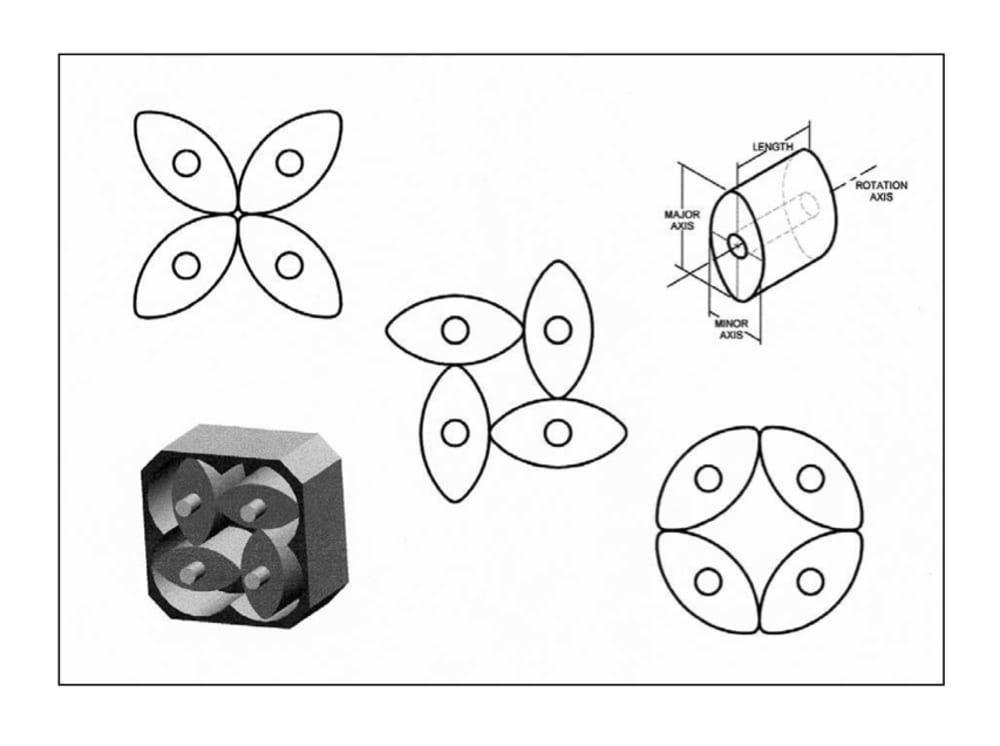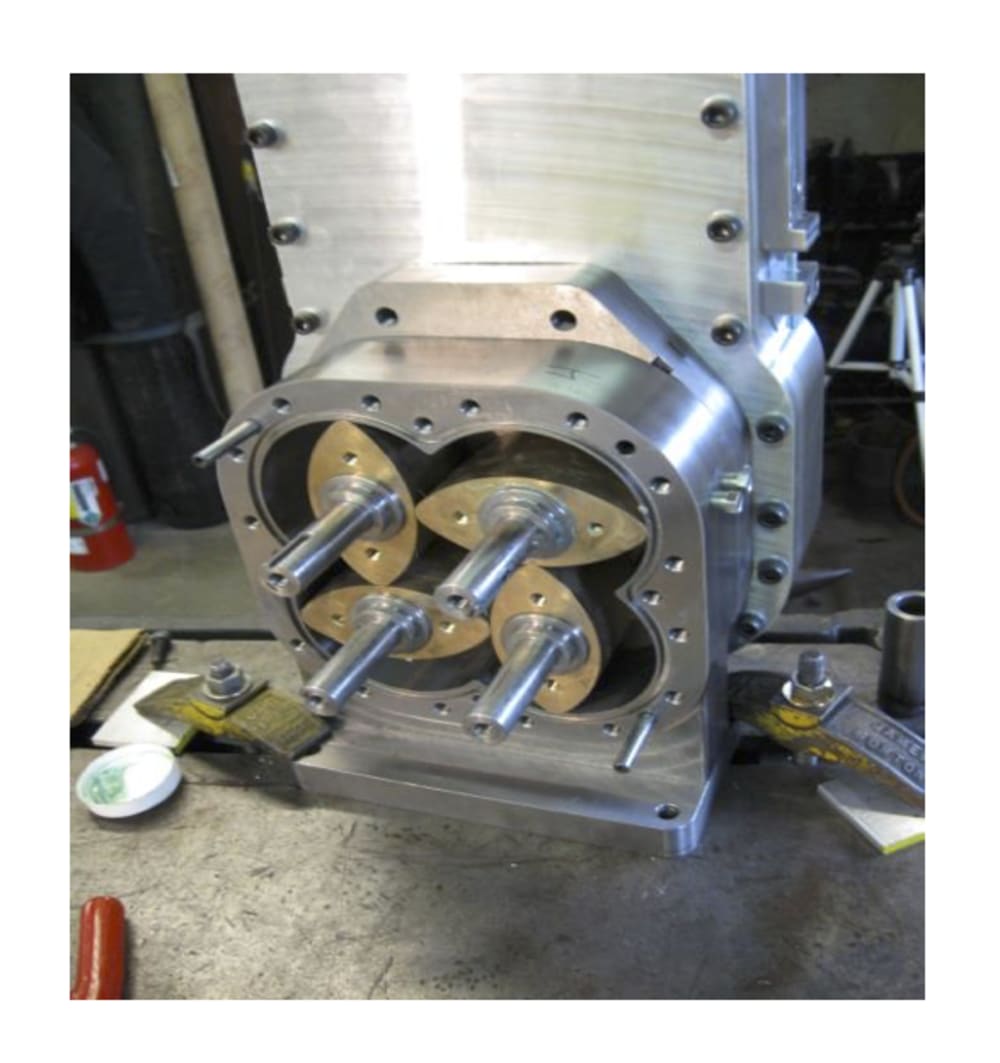
THE PRE -- A UNIQUE POWER DENSE & FUEL EFFICIENT 4 ROTOR 1 CHAMBER ICE
Planetary Rotor Engine Company (PREC) is a technology company formed to develop the Planetary Rotor Engine (PRE) -- a revolutionary engine design offering many advantages over the conventional piston driven internal combustion engines (ICE) that dominate engine markets today. With four rotors surrounding the center of the one chamber and turning in unison within a housing and end plates, a PRE provides great power density with very few moving parts. The others are the intake and exhaust valves plus the external gearing delivering power.
This novel engine configuration can reduce thermal losses and thus increase fuel efficiency. Friction, noxious emissions and probably manufacturer’s costs can be reduced. At half the size and weight of 4-stroke piston engines, PREs have the potential to replace piston engines in lawn and garden, recreational vehicles (land, water and air), plus (over time) much of the automotive and light truck markets. Manufacturers of 2-stroke pistons (highly polluting and unable to meet expected EPA standards) should be early PRE adopters.
Development mostly over the past 5 years by a small team of dedicated engine designers retained by PREC has enabled a 250cc demonstrator – PRE 1 -- to run successfully. They devised a rings/sun gear system for power takeoff and invented a valving system that prevented leakage. Gradual improvements from many trials have convinced the engineering team that a PRE can meet theoretical performance goals. With good data including an impressive pressure/volume curve, a crucial first goal in the commercialization of the PRE has been met. Using new heat-resistant materials for the rotors and new electronic control systems, the team should be able to solve the key design challenges that prevented this unique engine from running.
The next stage in the commercialization of the PRE begins with paying for some more precision components, completing the engine trials and engine performance data mapping of the PRE 1 prototype, then taking it for fuel consumption and emissions testing at the EPA Laboratory in Ann Arbor, MI. With this documentation and with the EPA tests completed, the Company will be in a position to begin marketing the PRE to potential licensees or corporate partners for commercial production. To reach this goal PREC needs new funding.
For military drones and light helicopters, PREC could build a very light 500cc PRE demonstrator (spark or diesel) with ceramic coated carbon fiber rotors, housing and end plates, producing 80+ hp with variable valving. Unlike a Wankel wasting fuel, production PREs will conserve it.
Figure 1 – Diagrams of the PRE Design
Figure 2 – PRE Prototype Assembly
-
Awards
-
 2016 Top 100 Entries
2016 Top 100 Entries
Like this entry?
-
About the Entrant
- Name:Jack Ribbens
- Type of entry:individual
- Software used for this entry:Matlab
- Patent status:patented





